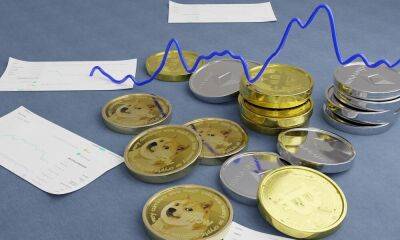Polkadot parachains spike after the launch of a $250M aUSD stablecoin fund
Crypto prices have been exploring new lows for weeks and currently it's unclear what it will take to reverse the trend. Despite the downtrend, cryptocurrencies within the Polkadot ecosystem began to rally on May 24 and have managed to maintain gains ranging from 10% to 25%, a possible sign that certain sub-sectors of the market are on the verge of a breakout.
Here’s a look at three Polkadot ecosystem protocols that have seen their token prices trend higher in recent days.
Acala (ACA) is the leading decentralized finance (DeF) platform on the Polkadot network, primarily due to the launch of aUSD, the first native stablecoin in the Polkadot ecosystem.
Following the collapse of Terra's LUNA and TerraUSD (UST), traders were searching for "safer" stablecoin options.
On March 23, ACA rallied after the project announced the launch of a $250 million ‘aUSD Ecosystem Fund’ that aims to support early-stage startups planning to build strong stablecoin use cases on any Polkadot or Kusama parachain.
Acala, nine parachain teams, and a group of venture funds have launched the $250 million 'aUSD Ecosystem Fund' ️The fund is seeking early-stage projects from any @Polkadot or @KusamaNetwork parachain with strong $aUSD stablecoin use cases https://t.co/OJ2V47ZUry pic.twitter.com/NDgLg2bG8N
Acala also announced the launch of a kickoff rewards program that has set aside 1 million ACA tokens as rewards for LCDOT/DOT, LCDOT/aUSD, ACA/aUSD and aUSD/LDOT liquidity providers.
Following the aUSD ecosystem fund announcement, the price of ACA spiked 31% from a low of $0.364 on May 23 to a daily high of $0.478 on May 24.
The Astar (ASTR) network is a smart contract hub for the Polkadot community that supports Ethereum (ETH), WebAssembly and other
Read more on cointelegraph.com
 cointelegraph.com
cointelegraph.com


![Polkadot [DOT] at Value Area Lows; traders can put a stop-loss just above… - ambcrypto.com](https://gocryptonft.com/storage/thumbs_400/img/2022/5/29/44498_bnk.jpg)

![Short or long? Here are some levels Monero [XMR] traders should to keep an eye on - ambcrypto.com](https://gocryptonft.com/storage/thumbs_400/img/2022/5/29/44486_kpos.jpg)





